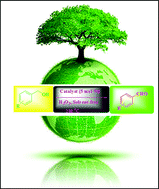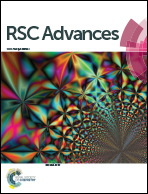An efficient oxidation of alcohols using a new trinuclear copper complex as a reusable catalyst under solvent free conditions†
Abstract
A new trinuclear copper(II) complex [Cu3(L)(μ2-Cl)2(H2O)6] was synthesized and characterized by various spectroscopic techniques. The trinuclear complex was demonstrated as an efficient catalyst for the selective oxidation of primary, secondary, aliphatic, heteroatomic and conjugated allyl alcohols to the corresponding aldehydes/ketones in good to excellent yields under solvent free conditions using H2O2 as an oxidant. The catalyst is easily synthesizable, easy to handle and reusable up to eight runs.


 Please wait while we load your content...
Please wait while we load your content...